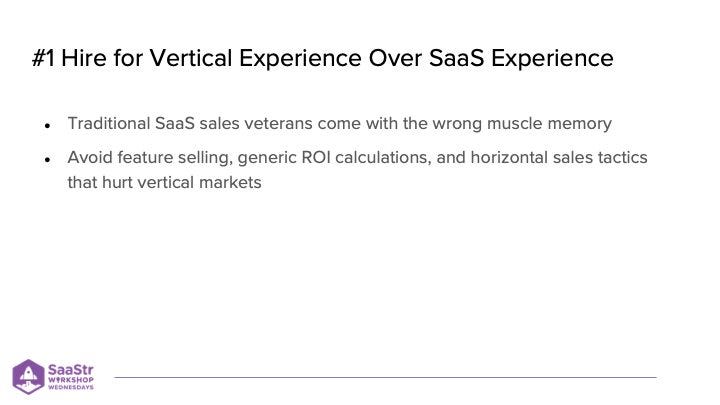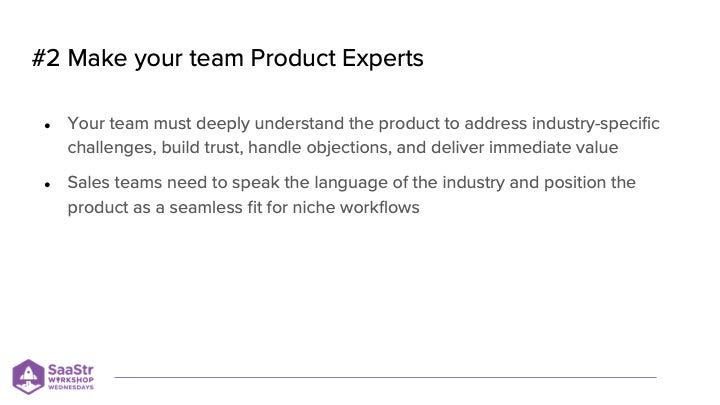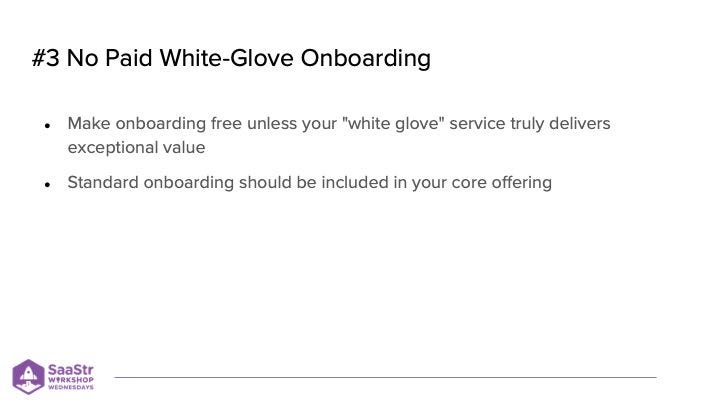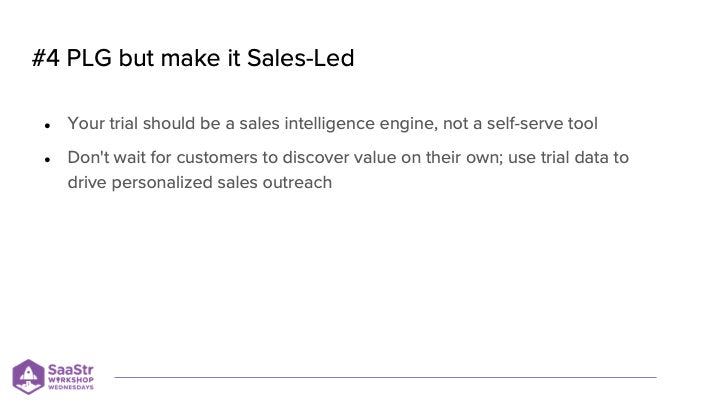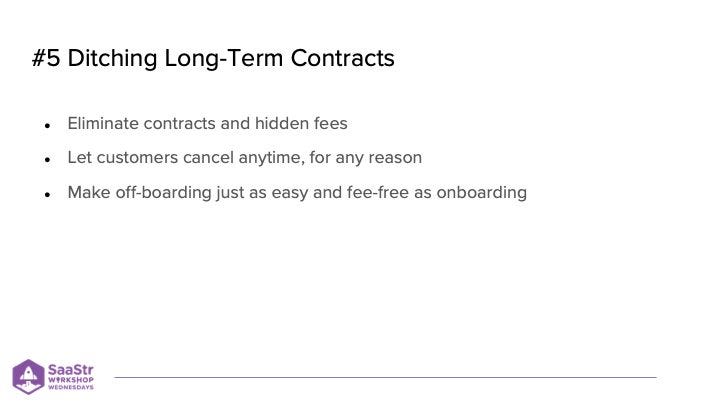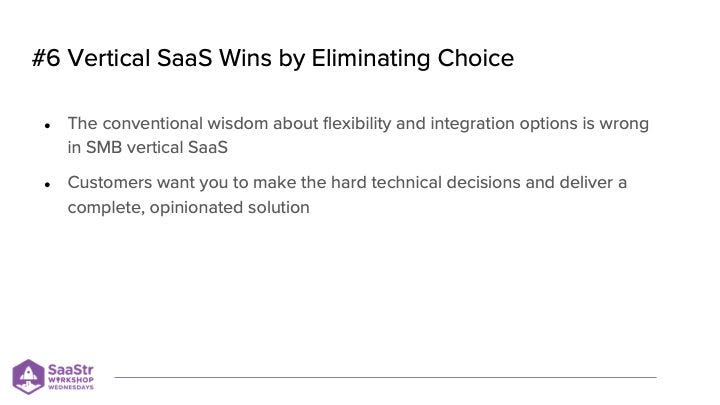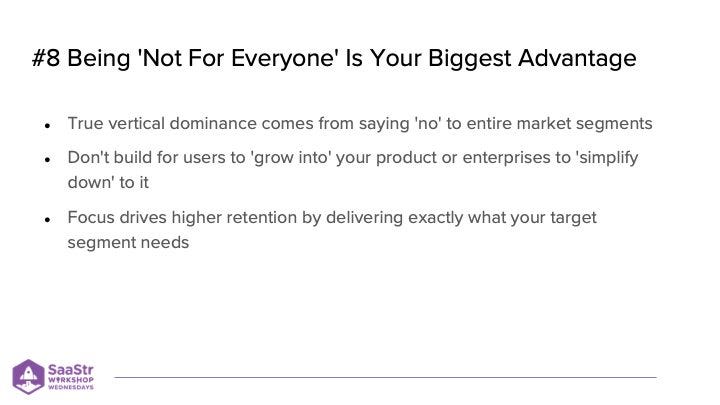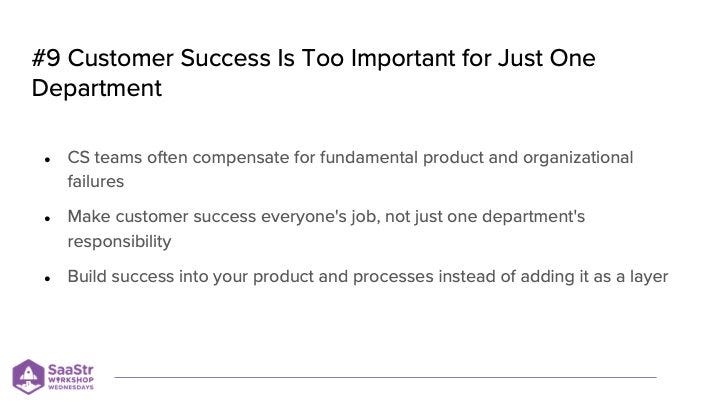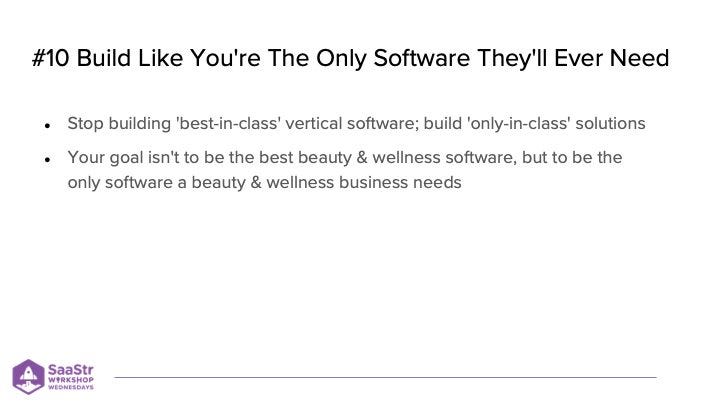10 Ways Sales is Different in Vertical SaaS with Mangomint's VP of Sales
"Our top-performing AE is a domain expert with no SaaS experience ... who was previously a salon manager in San Francisco."
While some might dismiss sector-specific vertical SaaS software as 'too small' or 'too niche', companies like Veeva ($40B), Clio ($3B), Toast ($1.3B), and Slice ($1B) have proven there's massive value in going deep rather than broad. Mangomint has quietly built an impressive vertical SaaS business in the spa and salon space, growing 100% year-over-year to approach $20M ARR with 110% NRR.
During a recent SaaStr Workshop Wednesday, Mangomint's VP of Sales Marchelle Mooney shared 10 ways sales is different in vertical SaaS. Marchelle's personal journey took her from early adopter of Mangomint, to 6 years later, VP of Sales over a 25+ person SMB sales team. Here's some of what she's learned along the way.
10 Ways Sales is Different in Vertical SaaS
1. Hire for Vertical Experience Over SaaS Experience
Michelle not only touts this point but has lived it. She was a salon owner for 10+ years and an early customer of Mangomint's. She loved the product so much, that she offered to work for free in sales in the beginning until she could earn her own slot.
While nowadays the company has perfected a high-velocity inbound model, Michelle's domain expertise originally helped her (and Mangomint) successfully break into outbound sales. Mangomint's early sales success came from Michelle's ability to have a personal conversation with salon and spa owners that maybe someone who worked at a more traditional software company might struggle to have.
"It's a very forcing function for sales in our industry, so I knew it needed to look the same for software. What was interesting is no other SaaS company approached it in the way that customers were used to. So literally showing up with food, that made sense to them. It felt a lot more familiar than our competition who were just trying to cold call them."
Fast forward to today, and six years later, Marchelle has built a 25+ person SMB sales team handling both high-volume inbound and outbound that has helped Mangomint achieve its incredible growth. Among Mangomint's sales team, their top two performers have no prior SaaS experience. Instead, they bring something more valuable: an authentic understanding of customer challenges.
Her top-performing AE is a domain expert who was previously a salon manager in San Francisco. She outsells reps who came from very high volume SaaS companies due to her industry knowledge creates instant credibility with prospects and customer. Michelle advises: "Take a look at your sales team and if you don't have anybody that worked in the industry - go find that person. Find the one that has felt the pain."
The make-up of Marchelle's sales team isn't just domain experts however, she tries to keep a 50/50 mix of industry veterans and SaaS professionals. She's still seeing great performance from people with prior SaaS experience vs domain expertise but it means re-training them out of 'feature selling' or 'feature dumping' and turning them into product experts who can build trust with those they are selling to now.
2. Make Your Team Product Experts
When Marchelle started building out Mangomint's outbound team, she quickly discovered their new BDRs were surprised by the amount of time dedicated to extensive product training at the start. It highlighted a common mistake in SaaS. "They were like, 'Oh, we were calling by day three at our prior SaaS companies.'" And these were big SaaS companies, tools Mangomint itself was using.
Mangomint takes a different approach. Every team member must be a product expert.
"We've debated this out as we go to scale," Marchelle explains. "In my opinion, it's a gold standard. Everyone needs to know the product. Everyone needs to speak the same language."
From growth teams, to support teams, Mangomint's standard it turning its own employees into product experts. And when they roll out new features or new products, they re-train everyone on them to maintain high standards of product expertise across all departments.
3. Remove Friction with Free Onboarding
For SMB customers in vertical SaaS, paid onboarding can be a deal-breaker. 90% of Mangomint's customers coming over are moving from another software, another competitor. So they're always going to have a pretty large stack of existing data to bring over.
Marchelle takes a strong stance with onboarding: "If it's mission-critical to do business with you, just make it free. Make these things easier."
Mangomint saw early on that from its competitors that paid onboarding was creating unnecessary friction, so they made it free. They've been able to successfully steal and retain customers from its competition by reducing barriers to product adoption.
4. Product-Led Growth + Sales-Led Motion
Marchelle's sales mantra is to embrace PLG, but make it sales-led. Mangomint's approach? Let customers start a free trial instantly, but use that trial strategically: "We're really using it as a way to witness the behavior of the customer... Where do they go first? Where do they get stuck?"
This insight drives personalized outreach: "Hey, I see you've got these memberships. You checked it out in the trial. Let's connect. Let's take a look at this together and see how we can build them just for you."
The sales team doesn't wait for the trial to end to show them that someone is qualified. Instead, they use data from the product trials to observe customer behavior and leverage that user data to personalize their sales outreach. Mangomint is seeing a lot of inbound sales success by combining the PLG motion and giving the sales team the exact conversation starters that they need for each prospect.
5. Ditch Long-Term Contracts
So how does Mangomint maintain 110% NRR without any traditional sales contracts? "The evidence is in the numbers," Marchelle explains. "Customers stay with us and often when they leave, they come back to avoid heavy long-term contracts."
Mangomint's sales philosophy is to prioritize customers and build trust by removing friction everywhere, even in cancellations.
This makes it easier for customers to return after temporary setbacks and builds trust through its product value rather than locking people in. Marchelle reminds us, " Removing friction is still part of the sales process."
6. Win Through Simplification
Vertical SaaS sales often succeeds by eliminating unnecessary choices.
"There's this idea that customers want an open API and they want to plug in here and go over there," explains Marchelle. But reality is different: "We know our customers so well, and we know that what they really want is for us to just do it for them."
Mangomint focuses on being the complete solution rather than offering endless integrations that are often dead ends. By eliminating unnecessary choices, Mangomint has become a one-stop solution, and its attributed this to some of its high customer retention rates.
7. Segment Sales by Sub-Vertical, Not Company Size
For Mangomint, like much of vertical SaaS, different sub-verticals (e.g., medical spas vs hair salons) have distinct needs.
To maintain its high-velocity and high-value sales, Mangomint stopped segmenting its sales team by company size and instead segmented by sub-vertical. It also goes back to making everyone an expert in the product — by further specializing based on sub-verticals, each sub-team has a better understanding and mastery of how those particular customers operate.
Marchelle explains: "This is so important when your ACV is smaller, like ours. Churn is naturally higher, so you have to trim off a few days of the sales cycle to allow AEs to more easily hit quota. But the only way it can happen if you train your sales team to be specialists in the specific business models that they're selling to. It's not about being an absolute master of how a medspa runs, but it's understanding the value that that medspa needs from the software."
8. Embrace Being "Not for Everyone"
"Being not for everyone is your biggest advantage," Marchelle insists. "You have to know what to say no to and simplify things down to the exact person you are serving."
Mangomint's clear focus on the ideal customer segment drives retention forward: "Zeroing in on the segment we want to serve allows every customer in our product to get exactly what they need."
So being not for everyone can be your biggest advantage in vertical SaaS if you can avoid temptations to expand to adjacent markets without understanding fundamentals and dominate your chosen segment.
9. Rethinking Customer Success as a Single Department
Now, this might be a controversial stance in vertical SaaS or even just plain ole' SaaS but Marchelle believes that customer success too important for any one single department. Instead, they distribute responsibility: product has to own success, sales has to own the reality and support has to own the problems.
Product owns success: It should be so aligned with your vertical's needs that it doesn't need translation. It shouldn't need somebody to come back in and say 'Hey, we noticed you're not using the product." By then, it's too late.
Sales owns reality: Sales should be setting realistic expectations they know the product can deliver because they're vertical product experts.
Live support owns problems: Real-time live support from industry experts beats scheduled check-ins every time.
By building world-class live support and becoming proactive with customer product usage, Mangomint has been able to make customer success an organizational responsibility.
10. Build to Be the "Only in Class" Solution
Mangomint's ultimate vision for winning it to build a 'only-in-class' solution vs a 'best-in-class' software. They want to be the clear and obvious answer to their customers problems.
So instead of thinking about how to integrate with other solutions like payment processors, marketing tools, or CRM, they're looking at building vertical-specific versions of these tools directly into the platform. Mangomint has seen customer satisfaction increase with each third-party tool they eliminate.
"Build and act like you are the only software they'll ever need and you will win."

